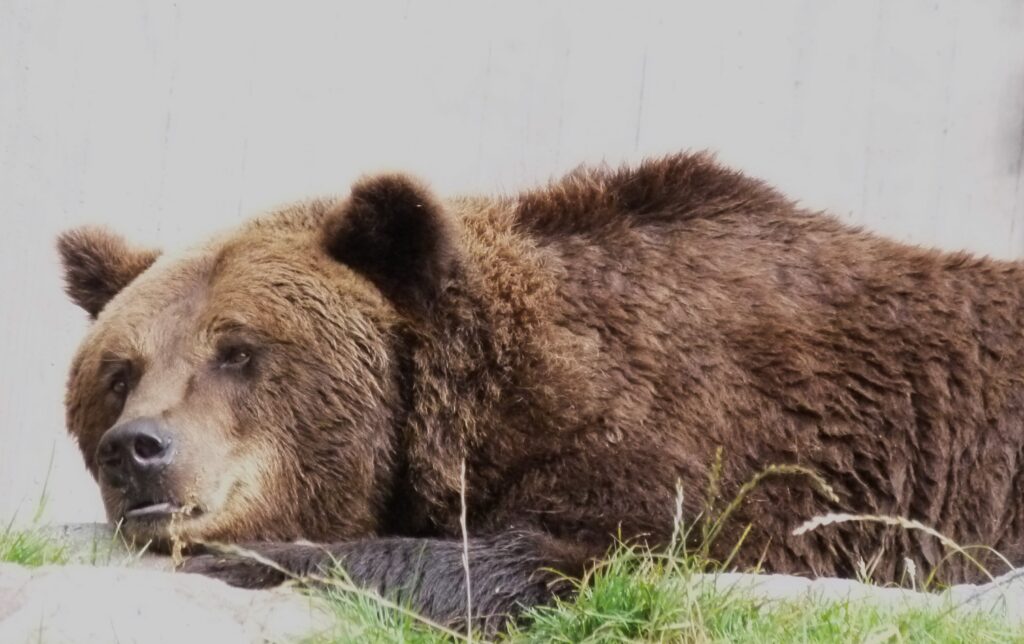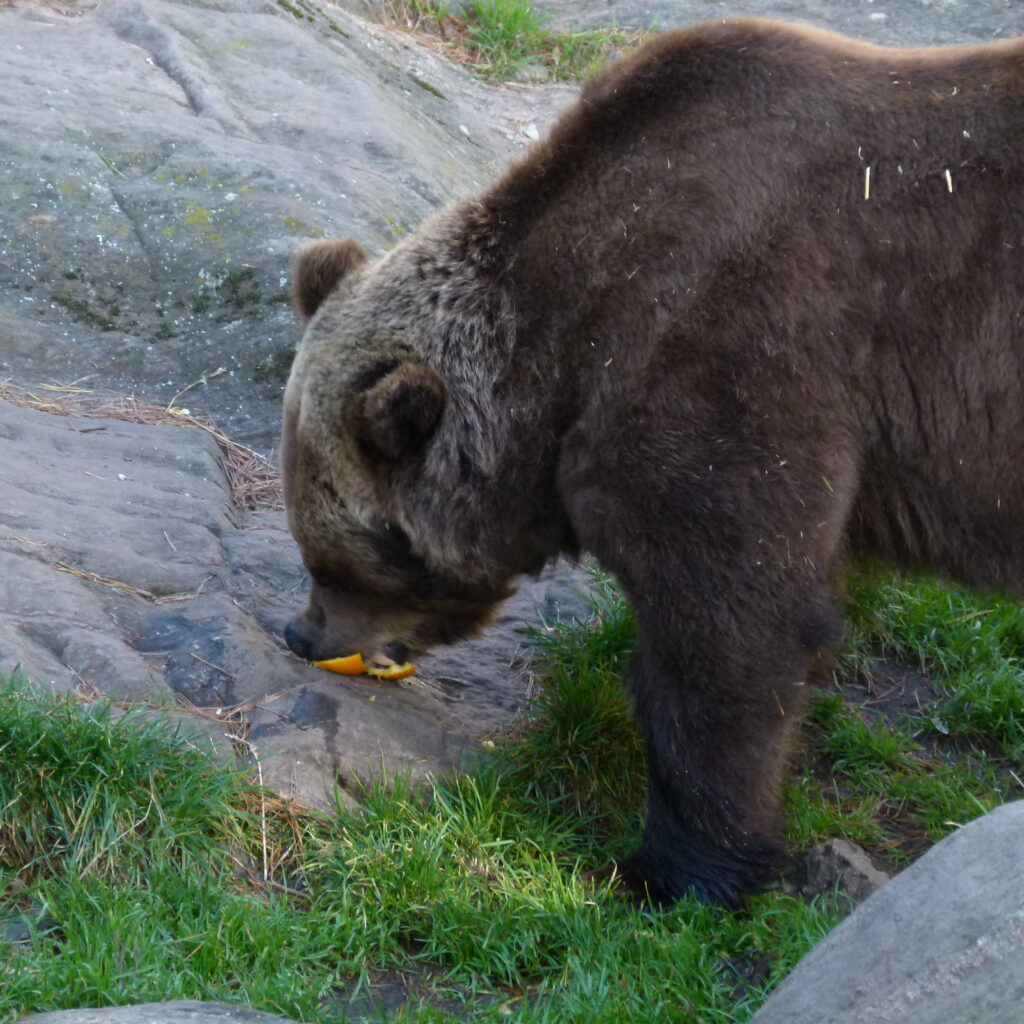Behavioural Activity

The insignificant statistical results regarding behavioural activity correlating with ambient temperature could be due to several factors:
- Both bears were out of sight more than 50% of the observation time, leading to a very small sample size. Only half of the bear house had supervision, meaning that no observations were possible whenever the bears were inside the unsupervised part. Also, the outside enclosure was partly a mountain peak, leading to big rocks and cracks hiding the bears.
- Both captive and wild brown bears have been shown to spend about 50% of their time awake being inactive, this aligns with the results of the current study.
- One possible reason for Bamse showing an overall lower activity level compared to Bart is that he is castrated. Behavioural activity has been shown to decrease after castration in dogs, suggesting this could be the case for brown bears as well.
Diet
No berries were provided to the bears during the study period. Both Bart and Bamse seemed to prefer fruit over vegetables and occasionally over fish. Close to torpor they got mostly apples and oranges.
The lack of blueberries might result in an unsuficient dose of poly-unsaturated fatty acids, since both apples and oranges contain a lower concentration compared to berries.
Both bears occasionally rejected fish close to torpor, this aligns with the behaviour of wild counterparts. Studies have found that periods of protein restriction can result in a decreased body temperature, which is a profitable physiological effect for bears prepairing to torpor.

Improving Welfare
Improving welfare can lead to Kolmården Zoo further becoming an example of good, sustainable welfare for the public but also for other zoos.
Optimal Diet
Brown bears seem to prefer lipids over carbohydrates, and carbohydrates over protein. Therefore, a diet consisting of less protein (about 20%) and more fat (about 30%) could be more suitable for the bears. Also, poly-unsaturated fatty acids can be provided through suitable dry pellets and plant oil; such as blueberry, chia or flax seed oil.
Fur Quality
Castration has shown to decrease fur quality of the individual, though both bears got worse fur quality after changing to a smaller enclosure. A health check on both bears by a veterinarian is needed to ensure physical welfare.
Enrichment
Several improvements and enrichments can be provided to the bears;
- A bigger enclosure more suitable for the home range size of bears. The current enclosure was only a fraction of the preferred space size of wild bears.
- Enrichment can be various and fun for both bears and visitors at the zoo, such as honey-logs, berry-picking, colourful food hidden on platforms, seasonal fishing, logs with insects, etc.
- Bears have shown behavioural differences tracing back to individuality, therefore, providing tasks suitable for Bart and Bamse’s different personalities could improve their mental health and welfare.
Limitations
For future studies
There were several limitations of the current study, including limited observation time and a fixed window for behavioural observation, making it difficult to do corrections. Also, when the study started, the intention was to compare the two bears behaviour data with brown bears at another zoo. Unfortunately, the other zoo did not participate in the end.
A bigger dataset is needed to further investigate capured brown bears behavioural activity compared to the ambient temperature. To get constant, accurate data effectively, other equipment is also needed, such as GPS trackers (bracelets, collars, tags) with acceleratory measurements. This was behavioural data could be equally obtained 24/7 without being limited by opening hours, structural design etc.
Acknowledgements
A thank you is given to the Kolmården Zoo and predator staff for making this study possible, and to Andreas Fahlman, Leonardo Pionavelli, Maël Van Dam, Jordi Altimiras and Nicklas Jansson for providing intersting and important insights.